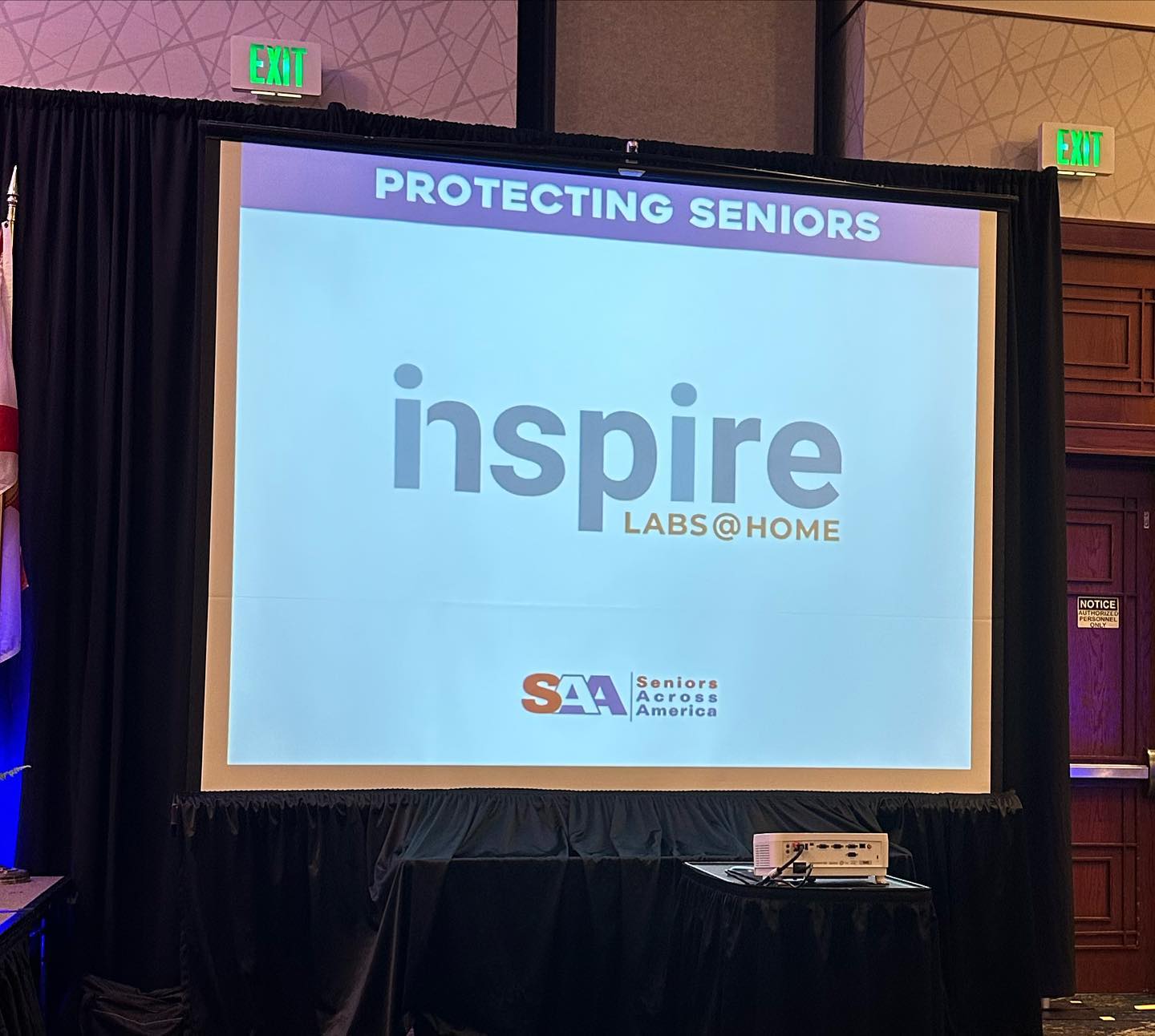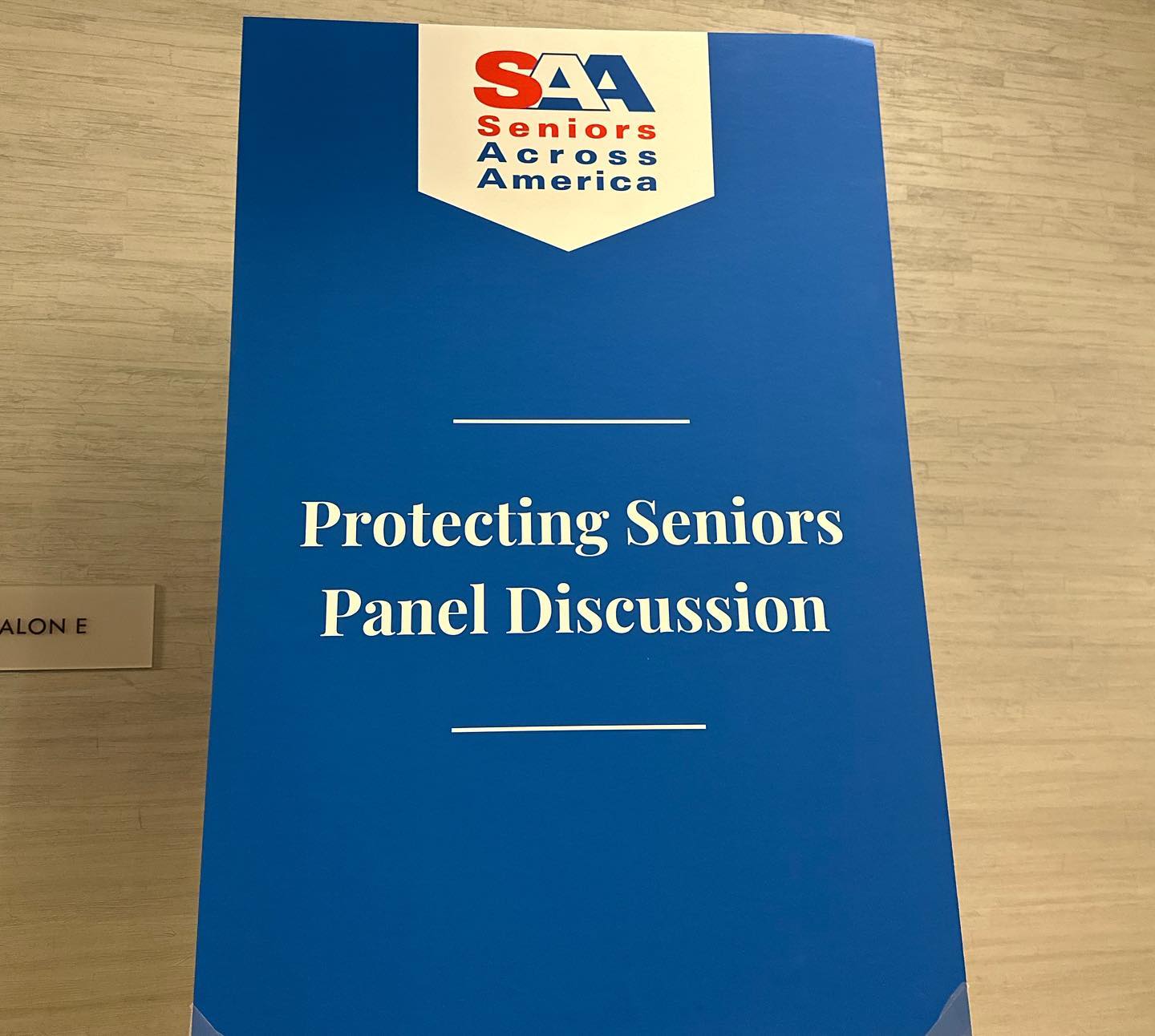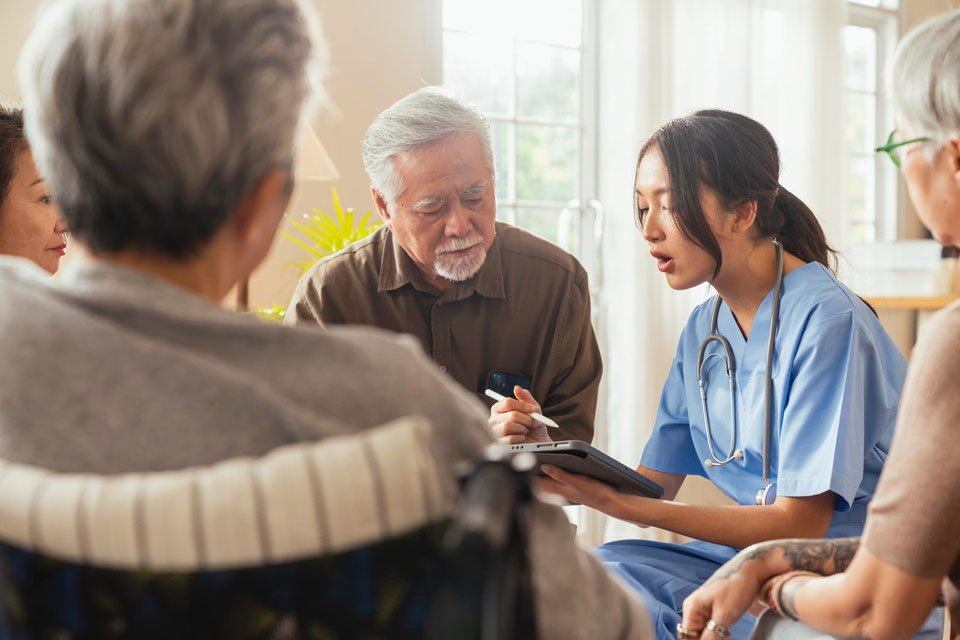
Inspire Insider, February 2023
February, 2023
Inspire Labs@Home participates in a ‘Protecting Seniors’ panel discussion at The Villages in Florida
We are thankful to be part of this week’s educational panel for Seniors Across America to inform seniors on ways to protect themselves. Topics during the panel discussion included: scams, health care and property insurance.
“Inspire Health Alliance is on a mission to advance affordable and efficient home-centered health care by leveraging the latest in medical technology to improve patient accessibility and provide positive measurable outcomes,” said Inspire Health Alliance Managing Partner John Kang.
“The use of medical diagnostics to improve treatments and enhance health and wellness is expected to nearly double in the next decade and Inspire Labs is committed to bringing these vital services directly to our clients to better enhance their personal wellness journeys.”
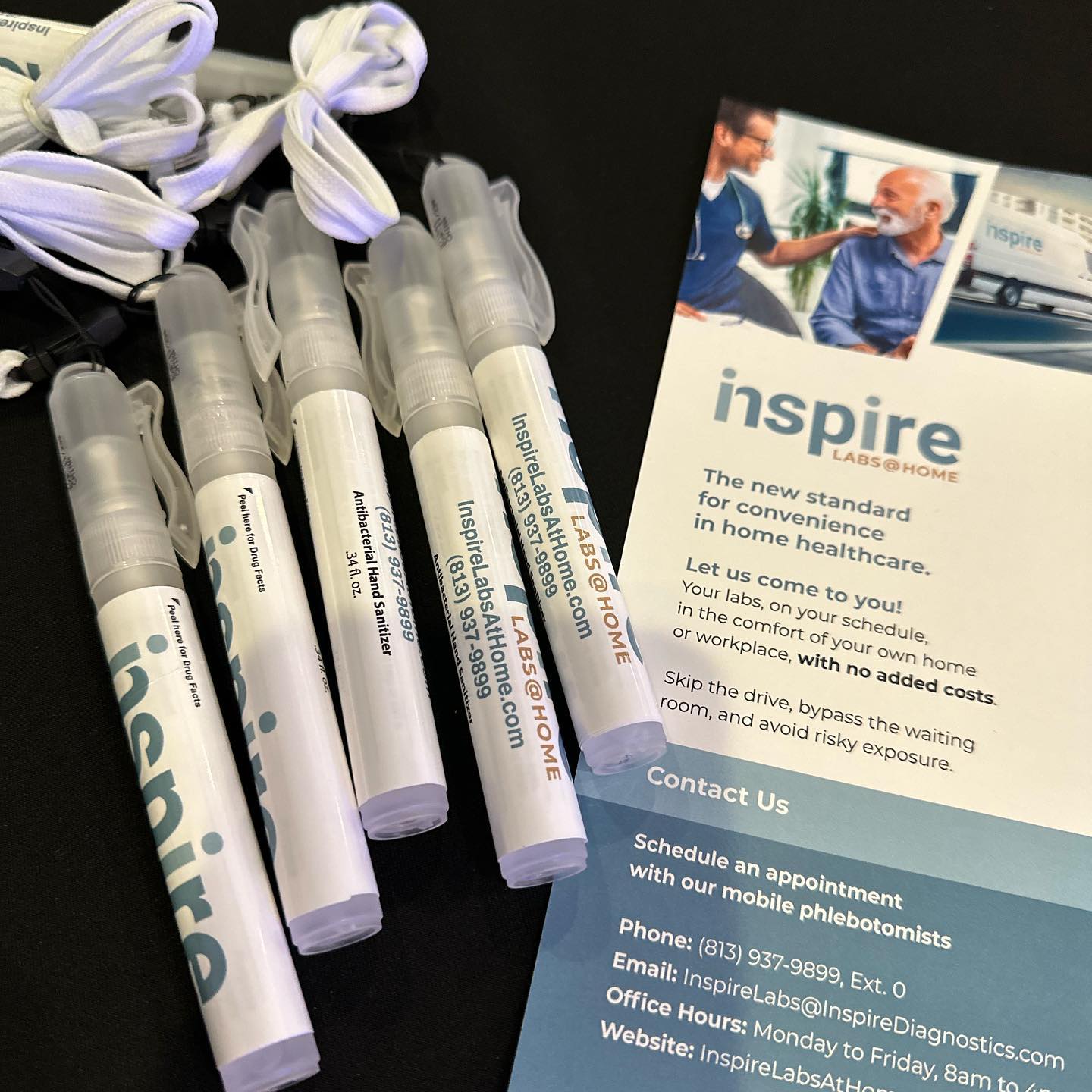
Don’t get up, stay comfy! We’ll come to you
Inspire Labs@Home provides mobile labwork services to patients wherever they define their home. Our trained phlebotomists travel directly to patients to collect and transport specimens to the laboratory for testing.
Your labs, on your schedule, in the comfort of your own home or workplace.
Need more information? Head to www.inspirelabsathome.com. Call us today at (813) 937-9899 or email us at inspirelabs@inspirediagnostics.com

COVID-19 Emergency Declarations End May 11, 2023
The early days of the COVID-19 pandemic were marked by several emergency declarations made by the federal government, under several broad authorities, each of which has different requirements related to expiration.
The national emergency and public health emergency declarations are now set to end on May 11, 2023, related to the COVID-19 pandemic.
Discover why hundreds of organizations are currently using Inspire Diagnostics to expand testing access. Visit us online or email us at info@inspirediagnostics.com

Inspire Insider, January 2023
January, 2023
Inspire Wellness@Home launches Partnership with 1health.io to Deploy Health and Wellness Lab Tests Direct-to-Consumer
We’re proud to partner with 1health.io to bring health and wellness tests to the broader direct-to-consumer market. As we kick off 2023, we are looking forward to continuing our work in advancing quality diagnostics.
“Inspire Diagnostics is excited to launch Inspire Wellness@Home in partnership with 1health,” said Managing Partner of Inspire Diagnostics, John Kang. “By offering a variety of at-home test options, Inspire Wellness@Home opens the door to a proactive approach to better health and living your best life. Simple to use tests, shipped right to your door, and supported by our national network of state-of-the-art labs.”

Flu levels fall further across the country: CDC
Seasonal flu activity continues to decline across much of the country, according to the Centers for Disease Control and Prevention (CDC).
Most states were experiencing “minimal” or “low” flu activity in the past week, according to the latest data published by the CDC on Friday. Only New Mexico and Oklahoma saw “high” or “very high” levels of influenza.
Discover why hundreds of organizations are currently using Inspire Diagnostics to expand testing access. Visit us online or email us at info@inspirediagnostics.com
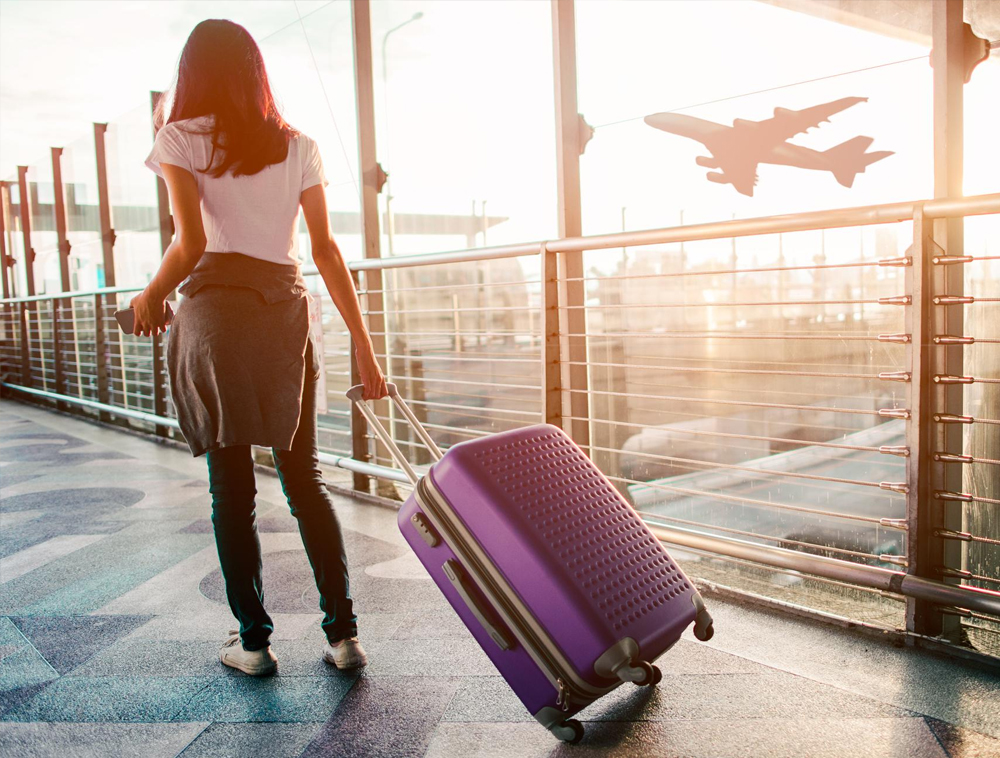
Beginning January 6, 2023, all travelers to the U.S. from China, Hong Kong, or Macau, will be required to take a COVID-19 test no more than two days before travel and provide a negative test before boarding their flight. The testing applies to anyone 2 years and older.
Read more: https://lnkd.in/d7fnQrKQ
To order a test: Click Here
Travelers can also use any test kit locally approved by the government in combination with our proctored services for $25 and receive a certified report for travel.
For any questions about testing or our proctored services, please email us: testresults@inspirediagnostics.com
U.S. to require negative COVID-19 test for air travelers from China
January 5, 2023
The United States will require travelers from China to show a negative COVID-19 test result before flying to the country amid China’s recent uptick in cases, the Centers for Disease Control and Prevention said Wednesday.
The big picture: The CDC’s decision comes amid a surge in COVID-19 cases in China, which recently loosened its travel restrictions and opened its borders for overseas travel.
- The CDC said it is concerned about slowing the spread of COVID-19 in the U.S., citing the “lack of adequate and transparent” data about the outbreak being reported from China.
- The agency also wants to prevent any variants of concern from leaking into the country.
Details: Starting Jan. 5 at 12:01 a.m. ET, all passengers from China who are 2 years old and older will need to receive a negative PCR or antigen self-test no more than 2 days before their departure from China, Hong Kong or Macau, per the CDC.
- This applies regardless of nationality or vaccination status, the CDC said.
- It also applies to travelers traveling from China via a third country, or those who are connecting through the United States to another country.
- Airlines will need to confirm the negative test result for all passengers before they board. Otherwise, they can deny boarding for the traveler, per the CDC.
Context: People in China — who were under heavy COVID travel restrictions until earlier this month — have been flocking out of the country. Air travel ticket sales have soared since China eliminated quarantines and testing requirements for travelers into the country.
- But China is also dealing with a deadly spike in COVID-19 cases due to the elimination of nationwide restrictions.
- The CDC said the lack of accurate data coming out of the PRC will make it more difficult for federal health officials to identify variants of concern if they arise.
Worth noting: The United States isn’t alone in monitoring what’s happening with travelers from China.
- Italian health authorities announced they would begin testing all arrivals from China for COVID-19 after about 50% of passengers on two flights to Milan were found to be carrying the virus, per Bloomberg.
- German health authorities said they were also monitoring the situation, Bloomberg reports.
Editor’s note: This story has been updated with additional details.
Discover why hundreds of organizations are currently using Inspire Diagnostics to expand testing access. Visit us online or email us at info@inspirediagnostics.com

Inspire Insider, December 2022
December, 2022
Thank you and Happy Holidays!
With the holiday season upon us, our team at Inspire Diagnostics would like to take this opportunity to wish you a Merry Christmas and a Happy New Year! May your holidays be filled with peace, joy, and love.
We sincerely appreciate your continued partnership as we work together to combat rising cases of colds, flu and COVID while maximizing the value Inspire brings to you and your teams.
On behalf of all of us, we truly wish you a wonderful festive season. We look forward to continuing to work with you throughout 2023 and beyond.
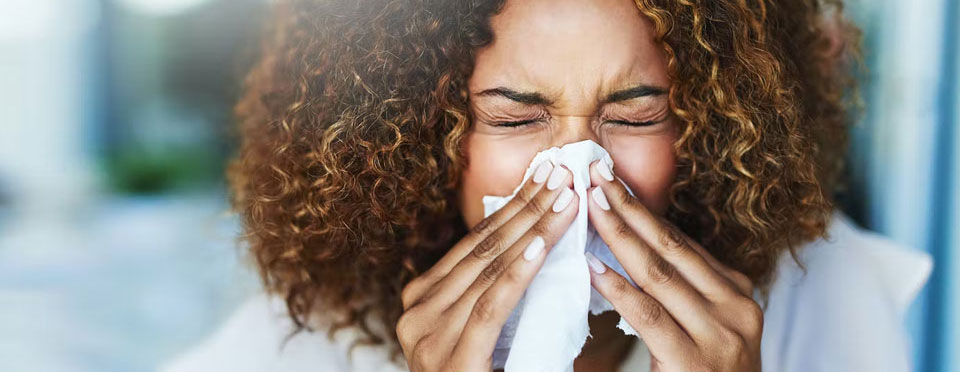
Three Viruses, One Swab, One Report
Influenza and COVID-19, along with the colder months pointing to increases in respiratory illnesses such as respiratory syncytial virus (RSV), make having answers regarding your health especially crucial.
Minimizing the number of swabs used and time spent in a health care setting, like a doctor’s office, has never been more important as COVID-19 cases in the U.S. continue to surge.
Coming soon, Inspire will be able to test for COVID-19, flu and RSV with one swab, easing the testing process.

On December 9th, 2022, CDC expanded the use of updated (bivalent) COVID-19 vaccines for children ages 6 months-5 years
If you are moderately or severely immunocompromised (have a weakened immune system), you are at increased risk of severe COVID-19 illness and death. Additionally, your immune response to COVID-19 vaccination may not be as strong as in people who are not immunocompromised.
Discover why hundreds of organizations are currently using Inspire Diagnostics to expand testing access. Visit us online or email us at info@inspirediagnostics.com
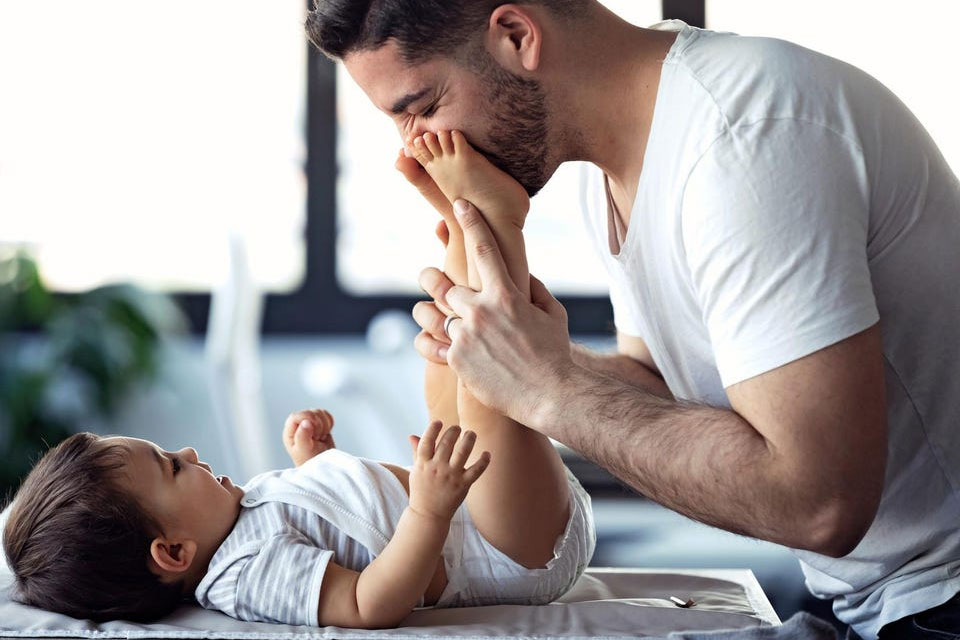
Our clinicians aren’t just diagnostic experts – they’re mothers and fathers with lived experience and have great parenting advice, too.
Forbes spoke to Adrianna Bravo, MD, FAAP, pediatrician, and senior medical advisor for Inspire Diagnostics, about some factors to consider when purchasing a changing table.
Parents need to keep three words in mind while shopping for a changing table – safety, storage and hygiene, says Bravo. “Once you meet those three criteria, the rest is up to personal preference.”
The 8 Best Changing Tables To Make Diapering Easier
December 5, 2022
If there’s one constant in parenting it’s messes—specifically in the diapering arena. In the newborn phase, diaper changes feel like they’re on a never-ending loop. Regardless of your baby’s age, you’ll need one of the best changing tables for both the sake of sanity and safety. After all, once your baby is mobile, diapering get more complicated, once they’re in the toddler stage, well, good luck chasing them down. Having been through several years of it myself, I can personally attest to this fact, and I’ve done the research on the best changing tables so you don’t have to.
Before purchasing a changing table, consider the amount of space you have available, parental height and your family’s specific set of needs. You’ll need to consider safety features, too. “Having a changing station in the nursery is an excellent idea for several reasons,” says pediatrician Dr. Adrianna Bravo. “The number one reason is safety, safety, safety. Ensure your changing table or pad has guardrails or raised sides at least two inches high. That will act as a deterrent for the baby rolling off the table. Parents should also make it a standard practice always to keep one hand on the baby.”
She also notes that having a changing table helps to “establish a routine for parents and babies. A changing table will be where parents change diapers, prepare the baby for bath time and dress the baby. Regularity can be essential to create a soothing daily routine.” It’s also, she notes, a more hygienic option than diaper changes on the bedding or rug.
Here are the eight best changing tables to shop right now. After perusing this list, don’t miss the best changing pads, the tested best diaper bags or the best diaper pails proven to contain odors.
- Best Changing Table Overall: Babyletto Sprout 3-Drawer Changing Table
- Best Value Changing Table: Delta Children Infant Changing Table with Pad
- Best Changing Table For Small Spaces: Graco Benton Changing Table
- Best Splurge Changing Table: Pottery Barn Kids Kendall Extra-Wide Nursery Dresser And Topper Set
- Best Freestanding Changing Table: DaVinci Jenny Lind Changing Table with Pad
- Best Small Dresser And Changing Table: Babyletto Hudson 3-Drawer Changer Dresser
- Best Portable Changing Table: Mobile Baby Changing Table With Wheels
- Best Changing Table And Crib Combo: Graco Hadley 4-In-1 Convertible Crib And Changer With Drawer
How We Chose The Best Changing Tables
When it comes to selecting options for parenting “best” lists, I rely upon expert advice or suggestions, recommendations from fellow parents and reviews. I spoke with two pediatricians ahead of gathering changing tables for this article.
In an effort to make sure that these sections continue to be the best options for parents, we update this article regularly. This piece was most recently edited in November of 2022. Forbes also has a rich history of reviewing and testing baby gear, both for the nursery and on the go. You may also be interested in reading the following stories:
What Is The Safest Changing Table?
Bravo points out that purchasing a safe changing table, partly comes down to where you plan to place it. Ideally, parents should place the changing table in a “space free from anything the baby can grab or become entangled in” and be mindful about having supplies close at hand, so you aren’t leaving baby unattended while you grab another diaper. “Simply put, parents need to keep three words in mind while shopping for a changing table: safety, storage and hygiene. Once you meet those three criteria, the rest is up to personal preference,” she says.
Bravo also pointed out earlier that it’s ideal to look for a changing table or pad with raised sides or guardrails to minimize baby rolling off. We’ve also pointed which changing tables come with anti-tip kits and other important safety features, such as drawers that won’t tumble out or all at once, as well as those certified to be free of certain chemicals and off-gassing. If your changing table has wheels, keep them locked to prevent accidents, too.
Is It Worth Buying A Changing Table?
As the pediatricians I spoke with noted, the best changing tables offer a safe and hygienic place to change your child’s diaper. It can also be a leaping off point toward establishing daily routines with your baby.
Dr. Rebekah Diamond, pediatrician and author of Parent Like a Pediatrician, also notes that having a changing table is helpful from a convenience standpoint “since you don’t have to bend down or move around a changing surface. There’s definitely an appeal from a nursery design and aesthetics perspective which is totally OK.”
However, many of us are short on space or constrained by budget concerns, especially when considering all the stuff suggested to stock a nursery for your baby’s first year of life. That’s why a changing table-dresser combination make deliver the most value for your family, or you may prefer a more inexpensive, temporary solution for use just during the busiest of diaper seasons: the first year. The key is to consider your space and individual family’s needs.
Discover why hundreds of organizations are currently using Inspire Diagnostics to expand testing access. Visit us online or email us at info@inspirediagnostics.com
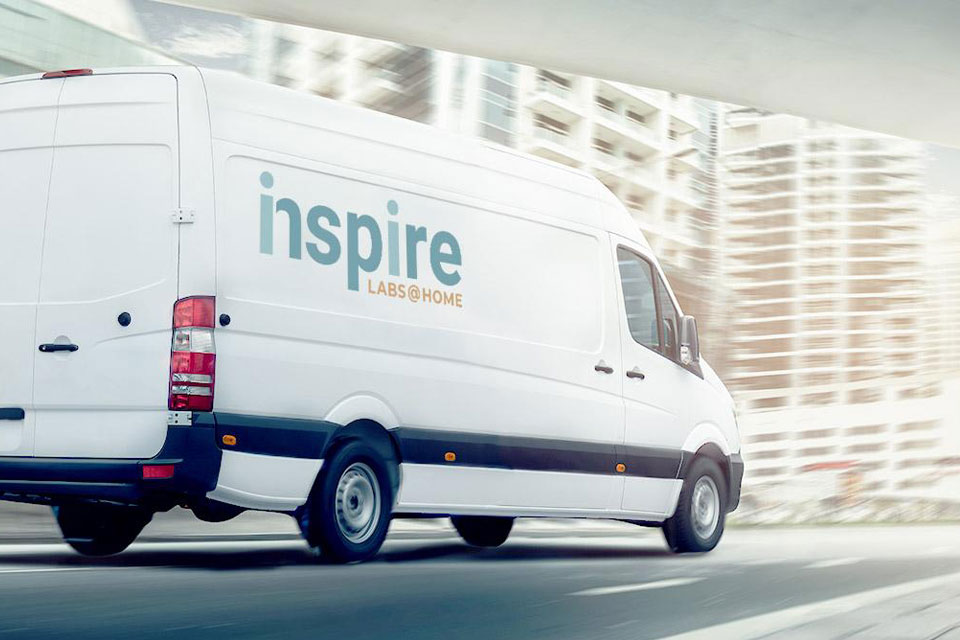
Inspire Insider, November 2022
November, 2022
Physician Ordered Test Collections from the Comfort of Home
Each Inspire Labs@Home technician is certified to collect a full range of diagnostics tests, including blood, saliva, stool and urine samples. Vital signs and biometrics are also taken at the beginning of each patient appointment.
Receive your results from the ordering doctor, or through our secure Inspire Labs@Home platform, depending on which type of diagnostic test was ordered.
Welcome to lab services in the comfort of your home, with no added costs.

Discover why hundreds of organizations are currently using Inspire Diagnostics to expand testing access. Visit us online or email us at info@inspirediagnostics.com
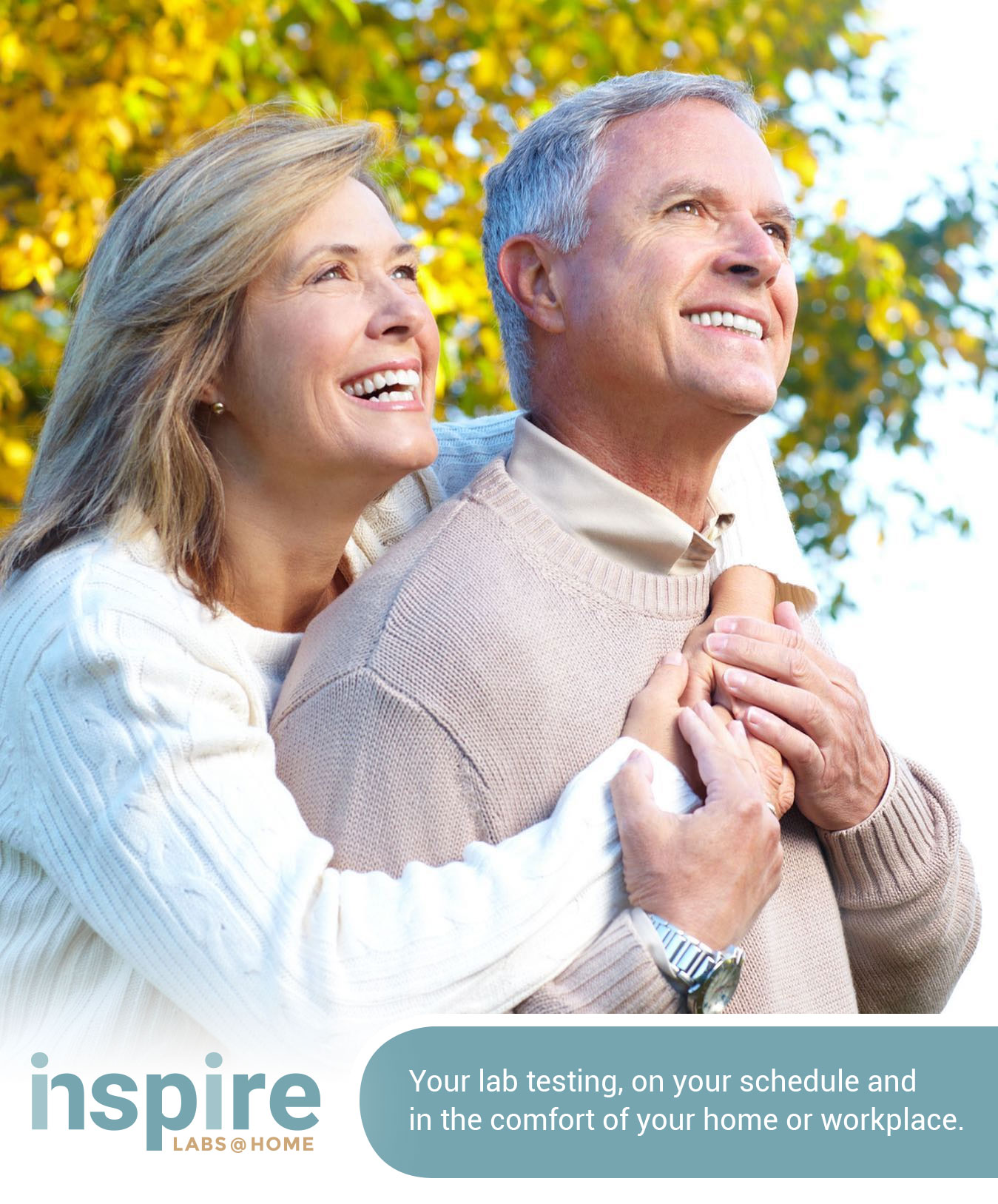
Inspire Insider, October 2022
October, 2022
Now offering over 3,000 at-home testing options
Labs@Home increases accessibility to diagnostic testing by providing convenient options for physician ordered test collection from the comfort of home.
The pandemic has highlighted the need to help busy parents and professionals, people without access to transportation, and those with disabilities, chronic conditions or who are immunocompromised, manage their health care more efficiently.
Welcome to lab services in the comfort of your home, with no added costs.

Discover why hundreds of organizations are currently using Inspire Diagnostics to expand testing access. Visit us online or email us at info@inspirediagnostics.com
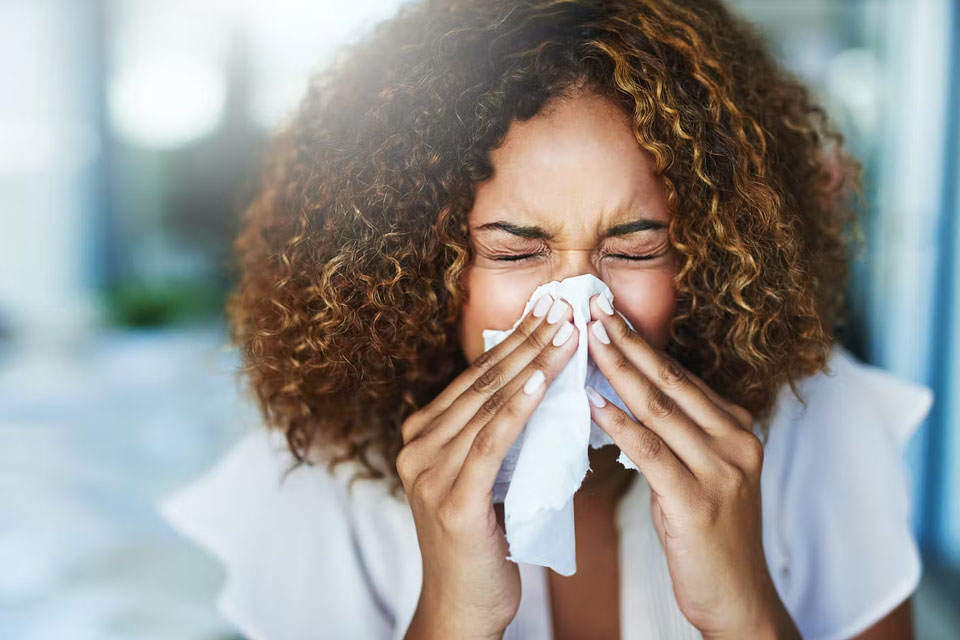
Inspire Insider, September 2022
September, 2022
Flu, a cold, or COVID? Do you know the difference?
Feeling unwell can be especially concerning these days. Determining the cause of an illness can be tricky because many share symptoms that can leave you coughing, sniffling and sneezing. But there are important differences.
Coming soon, one test can help you get to the bottom of what is causing these symptoms. Figuring out what’s making you sick can help you recover and prevent spreading sickness to others.
Winter is the prime cold and flu season. You’re more likely to be indoors and closer to others when it’s colder outside. Available soon, our new diagnostic test will help you distinguish flu from COVID-19 with one sample.

Wintery mix of viruses
Flu and COVID-19 are caused by different viruses that can be spread among people. Flu is caused by the influenza virus. COVID-19 is caused by SARS-CoV-2. Both can give you a fever, cough, headaches, and body aches. For more information on COVID-19 and flu, click on the button below.

Extension of test kit shelf life
Inspire Diagnostics understands and appreciates our clients’ concerns over test kits showing expiration dates that have passed. Please rest assured that these rapid antigen test kits remain valid, accurate and safe for your testing needs.
The United States Food and Drug Administration (FDA) has approved an extended shelf life for the Intrivo On/Go test kits used by Inspire Diagnostics. Please visit https://www.letsongo.com/product-updates-ongo for the official notice of extension.

Frequently asked questions about COVID-19 vaccination
Click the button below for answers to commonly asked questions about COVID-19 vaccination. Visit How to Protect Yourself and Others to learn more.
Discover why hundreds of school leaders trust Inspire Diagnostics. Visit us online or email us at info@inspirediagnostics.com

What we know (so far) about long Covid
By Emily Kim
September 25, 2022
For most people who catch Covid, their symptoms typically fade within two weeks. But for others who suffer from a phenomenon called long Covid, their symptoms can persist for months or years even after testing negative. Symptoms can also reappear long into one’s supposed recovery. Researchers have grappled with this concept of long Covid for a while now. Because it can arise from both mild and severe Covid cases and is associated with over 200 symptoms which vary in severity, it cannot be easily defined or diagnosed; even the World Health Organization’s clinical case definition for long Covid has been scrutinized by scientists and researchers alike. However, in the last month, numerous studies have made strides in demystifying aspects of this troubling phenomenon.
Common long Covid symptoms include shortness of breath, fatigue, and a lingering cough, but some studies have recently uncovered even more. An analysis of primary care records of England residents—some with prior Covid diagnoses and others with no prior history of the virus—revealed hair loss and reduced sex drive to be two novel symptoms of this syndrome. These symptoms were analyzed 12 weeks after initial infection.
From the analysis, researchers were also able to categorize symptoms into three groups: varied (ranging from fatigue to pain), cognitive ( brain fog, insomnia, and depression), and respiratory symptoms (cough, shortness of breath, wheezing). The majority of long-Covid sufferers experienced a wide variety of symptoms, with 80% falling into the first category. 15% experienced persistent cognitive symptoms, and 5% experienced respiratory symptoms.
Importantly, researchers noted that because their findings were based solely off of GP consultations and what symptoms participants reported to their doctors, this limited the possible range of their analysis. They could only compare the presence and severity of the reported symptoms in those with and without a prior history of Covid.
“About 5 to 10% of people may take a long time to recover their senses of taste and smell.”
– Dr. Gary Desir
Nevertheless, this analysis provided further support to the fact that long Covid may not look the same for everyone. There is an extensive range of symptoms, which highlights the need for “tailored health services” and clinical trials to test appropriate, varied treatment options.
Another study from The BMJ looked specifically at loss of taste and smell—a relatively common symptom among earlier strains of the virus—and found that it affects approximately 5% of long-Covid sufferers. Researchers synthesized medical data from 18 previous studies and, with the help of mathematical modeling, found that 5.6% of those with a previous Covid infection experienced loss of smell, and 4.4% experienced loss of taste after 180 days. However, the data also suggested that these statistics underestimated the actual number of people who would experience such changes to their olfactory and gustatory senses. Dr. Gary Desir, professor of medicine and chair of internal medicine at Yale School of Medicine, stated that “about 5 to 10% of people may take a long time to recover their senses of taste and smell.” While this may not initially seem like a large number, this would mean that a whopping 4.5 million people are potentially susceptible to long-term changes to their sense of smell and taste in the US. Dr. Christopher von Barfield, co-author of the study and professor of physiology and cell biology at the University of Nevada Reno, hopes that studies like these will kickstart new research into improved therapy and treatment options.
On a federal level, on August 3rd, the Biden-Harris administration released a National Research Action Plan on Long COVID. This report called for the formation of an Office of Long COVID Research and Practice, as well as “proposes an effective, comprehensive, and equitable research strategy to inform [the] national response” to the syndrome. The administration also released a comprehensive report which delineates the federal resources available to long-Covid sufferers and advises healthcare workers on how to best tend to their patients.
There is still much we do not know about long Covid, but these studies and federal reports show that research on this phenomenon is only growing. Indeed, we will not be left in the dark forever, and can look forward to even more streamlined, government-driven research endeavors in the future.
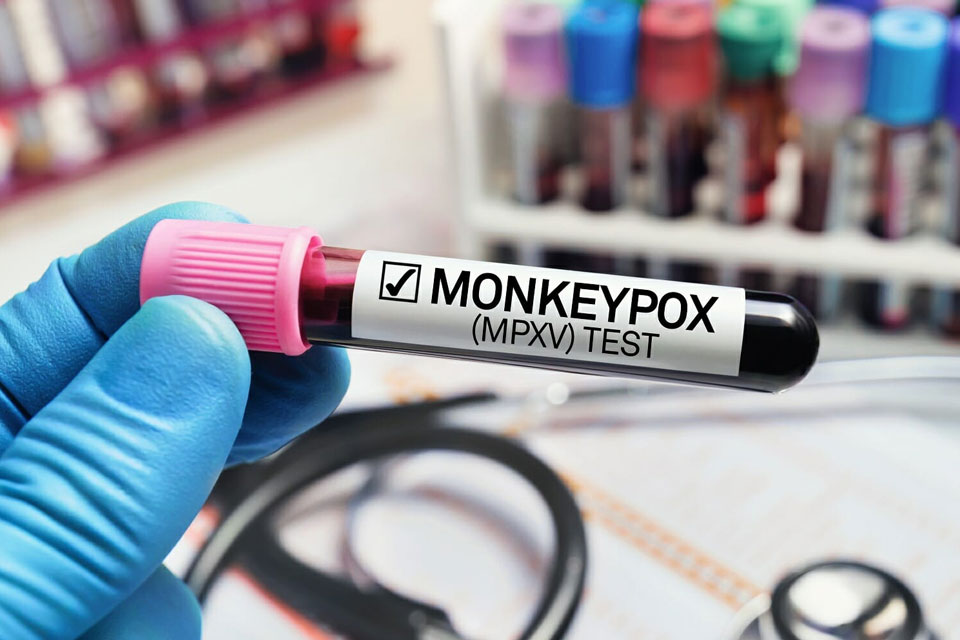
The Rundown on Monkeypox
By Emily Kim
September 5, 2022
As of August 4th, monkeypox—a disease most notably characterized by painful skin lesions and a distinct rash— is officially a public health emergency in the US. This declaration has come after over 6000 people have contracted the disease across 48 out 50 states (only Wyoming and Montana have not yet detected any cases) in the last few months alone. President Biden appointed Robert Fenton of the Federal Emergency Management Agency (FEMA) and the CDC’s Dr. Demetre Daskalakis as monkeypox response coordinator and deputy coordinator, respectively. According to a statement from the White House, the two will spearhead the country’s efforts to “equitably increas[e] the availability of [monkeypox] tests, vaccinations, and treatments.”
As the country is also battling a resurgence of COVID-19 cases due to the BA.5 variant, this news about yet another disease may leave people in dismay. But here is what we know so far about monkeypox: how it spreads; the symptoms; treatment options; and most importantly, how to stay safe.
The first cases of monkeypox were discovered in 1958 in two monkeys being studied for research. Importantly, it was not that the disease was originally transmitted by monkeys; rather, it is believed that the original carriers were African rodents. 1970 marked the year of the first instance of the disease in humans, and before reaching the US in 2022, numerous cases had emerged across western and central Africa.
Monkeypox is not as easily transmissible as SARS-CoV-2; it primarily spreads not through respiratory droplets, but through prolonged physical contact with another person.
Monkeypox is caused by an infection of the monkeypox virus, which is in the same family of viruses as that which causes smallpox. Importantly, however, the monkeypox mortality rate is low. BBC states that the mortality rate of the current strain is approximately 1%.
Monkeypox is not as easily transmissible as SARS-CoV-2; it primarily spreads not through respiratory droplets, but through prolonged physical contact with another person. For example, you are at risk for monkeypox if you come in direct contact with an infected person’s lesions, scabs, or bodily fluids. According to Dr. Madeline Barron, Science Communications Specialist at the American Society for Microbiology, “You can also get it by touching items that someone who’s been infected has touched.”
Besides the characteristic rash and fluid-filled lesions, monkeypox symptoms may resemble those of the flu: fever, muscle aches, and chills are fairly common. In fact, these flu-like symptoms typically appear first, with the chickenpox-like rash appearing days later.
Most monkeypox cases resolve with time without any treatment, but those with more severe infections can look to antiviral medication to help alleviate their symptoms.
If you develop symptoms or suspect that you have monkeypox, the WHO recommends that you first contact your healthcare provider to undergo any necessary testing. If you test positive, CDC guidelines state that you are to isolate yourself until the “rash has fully resolved, the scabs have fallen off, and a fresh layer of intact skin has formed.” However, the monkeypox rash typically clears up within two to four weeks, which is an impractical amount of time for some to self-isolate. For this reason, the CDC also states that in the absence of respiratory symptoms, infected individuals can carry out day-to-day activities fully masked and with their rashes tightly covered. It is still advised that you avoid large crowds, close contact with others, and sharing personal items until the rash subsides entirely.
Most monkeypox cases resolve with time without any treatment, but those with more severe infections can look to antiviral medication to help alleviate their symptoms. Moreover, there are two monkeypox vaccines available to the public. JYNNEOS is a monkeypox-specific vaccine, and ACAM2000 is a smallpox vaccine that is now approved for monkeypox prevention as well. As of now, only close contacts and those who have engaged in sexual activity with infected individuals within the last 14 days are eligible for the vaccine. However, the White House is working to accelerate vaccine production and hopefully expand eligibility over time.
For now, we can take the following precautions to protect ourselves from monkeypox: thorough handwashing, avoiding close physical contact with those who you suspect may be infected, and donning masks and gloves when caring for an infected person.
Again, it is important to remember that monkeypox is not nearly as transmissible as COVID-19, so there’s no need to fear—we just need to take some extra precautions. And as more and more research is conducted on this disease, we will all be better informed on how to protect ourselves moving forward.

